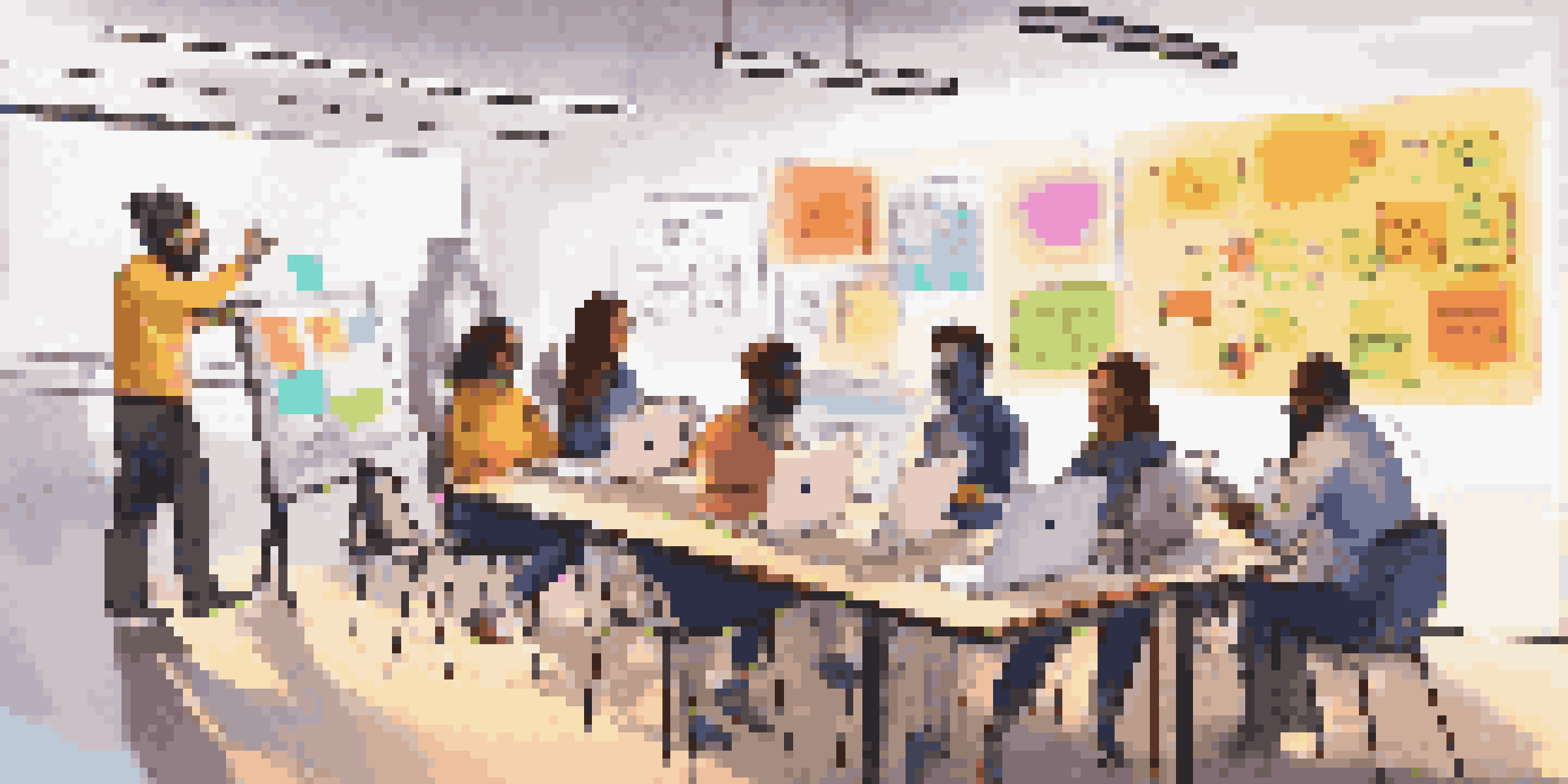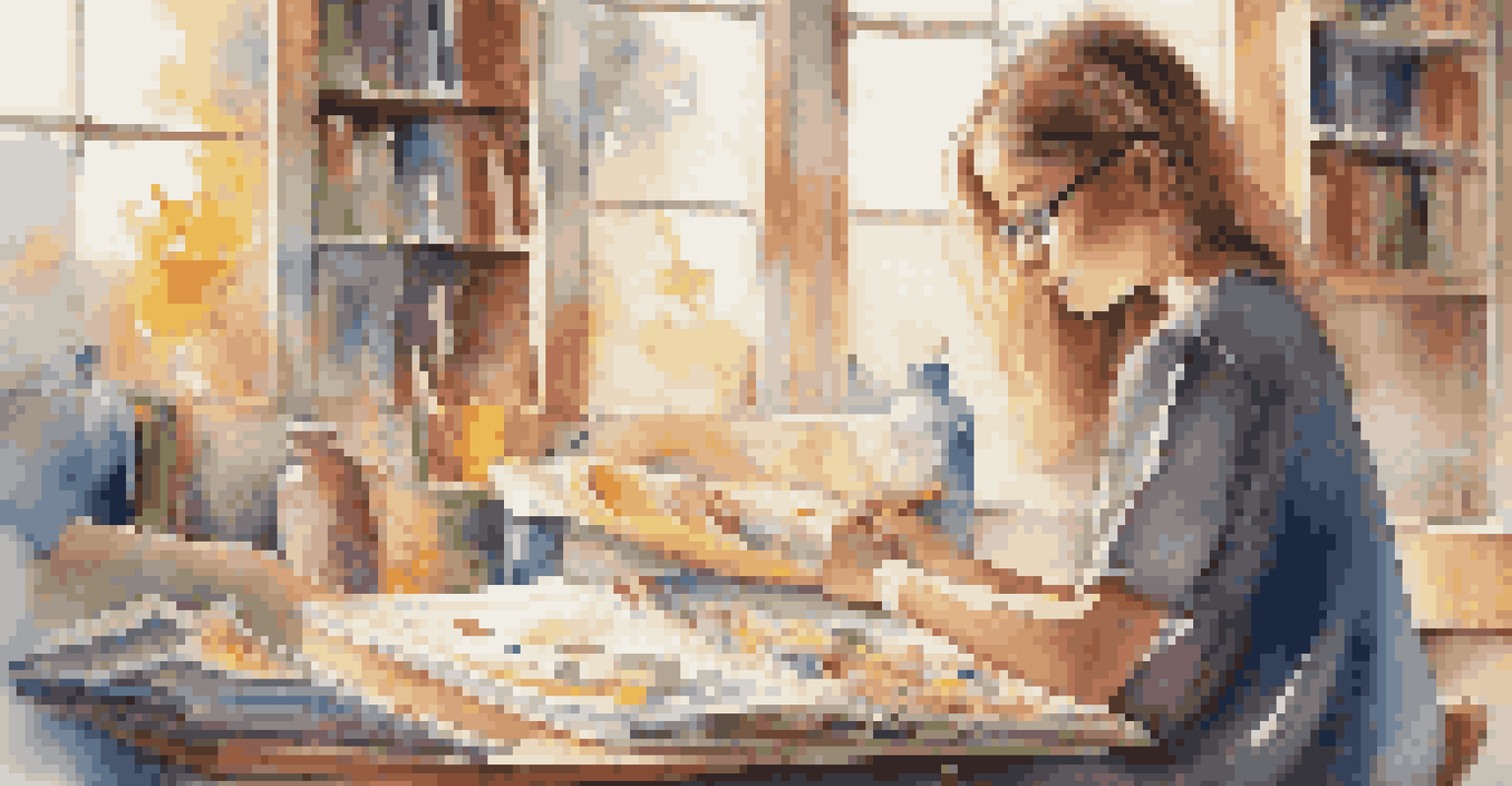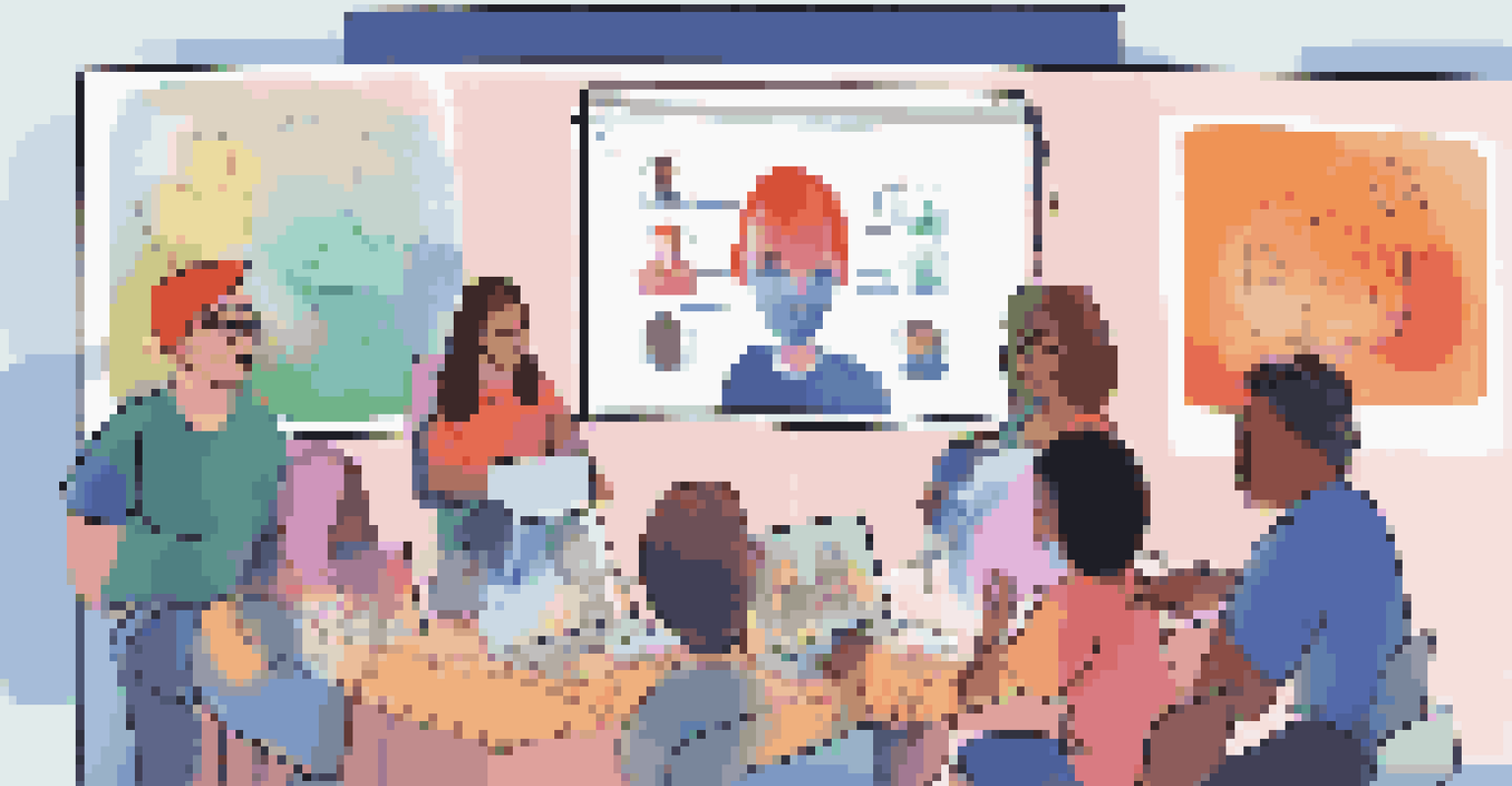The Role of Creativity in Online Learning Communities

Understanding Online Learning Communities
Online learning communities are platforms where learners interact, share knowledge, and support each other. They can range from formal education settings like MOOCs to informal groups on social media. These communities foster a sense of belonging and collaboration, making learning more dynamic and engaging.
Creativity is intelligence having fun.
In these environments, learners are not just passive recipients of information; they are active participants. This shift transforms the educational experience, encouraging individuals to express themselves and explore new ideas. The collaborative nature of these communities often leads to richer, more diverse learning experiences.
Yet, the success of online learning communities heavily relies on engagement. Here, creativity plays a vital role by stimulating interest, encouraging participation, and enhancing the overall learning experience. By fostering an environment where creativity thrives, these communities can become vibrant hubs of knowledge and innovation.
The Power of Creative Expression in Learning
Creative expression allows learners to explore concepts in ways that resonate with them personally. Whether through writing, art, or multimedia projects, creativity can deepen understanding and retention of material. This personal connection to learning not only enhances comprehension but also makes the process more enjoyable.

For example, when learners are encouraged to create a visual representation of a concept, they engage with the material on a deeper level. This approach not only solidifies their understanding but also invites others to interpret and discuss the idea creatively. Such exchanges can lead to richer discussions and a more profound grasp of the subject matter.
Engagement Drives Learning Success
Active participation in online learning communities fosters a dynamic and collaborative educational experience.
Moreover, creative expression can empower learners to share their unique perspectives. By valuing diverse viewpoints, online learning communities become more inclusive and supportive, ultimately enhancing the overall learning experience.
Encouraging Collaboration Through Creativity
Creativity can serve as a catalyst for collaboration in online learning communities. When learners are encouraged to brainstorm, share ideas, and work on creative projects together, they build stronger connections. These collaborative efforts often lead to innovative solutions and a sense of camaraderie among participants.
The best way to predict the future is to create it.
Consider a scenario where students collaborate on a video project about a historical event. Each member brings their unique skills and perspectives, resulting in a more comprehensive and engaging final product. This teamwork not only enhances the learning experience but also fosters important skills like communication and problem-solving.
By creating opportunities for collaborative creativity, educators can help learners develop a sense of ownership over their projects. This ownership can lead to increased motivation and investment in the learning process, making online learning communities more effective and enjoyable.
Fostering a Culture of Creativity
To harness creativity effectively, online learning communities must cultivate a supportive culture. This involves creating an environment where learners feel safe to express their ideas without fear of judgment. Encouraging risk-taking and experimentation can lead to breakthroughs in understanding and engagement.
For instance, educators can implement brainstorming sessions or creative challenges that inspire learners to think outside the box. These activities not only promote creative thinking but also help participants build confidence in their abilities. A supportive atmosphere encourages learners to share their unique talents and collaborate more freely.
Creativity Enhances Understanding
Encouraging creative expression allows learners to connect personally with material, improving comprehension and retention.
Furthermore, recognizing and celebrating creative contributions can reinforce this culture. By showcasing innovative projects or ideas, communities can inspire others to take creative risks, leading to an even more dynamic learning environment.
Utilizing Technology to Enhance Creativity
Technology plays a crucial role in fostering creativity within online learning communities. Various digital tools and platforms can facilitate creative expression, collaboration, and engagement among learners. From interactive design software to online brainstorming tools, the possibilities are endless.
For example, platforms like Padlet enable learners to collaboratively share ideas and resources in a visually engaging way. Such tools not only enhance the creative process but also provide opportunities for real-time feedback and discussion. This interactivity can lead to richer, more nuanced learning experiences.
Additionally, technology can bridge the gap between diverse learners, allowing them to collaborate regardless of geographic location. This connectivity opens up a world of creative possibilities, enabling individuals from different backgrounds to come together and learn from one another.
Balancing Structure and Creativity in Learning
While creativity is essential, it must be balanced with structure to ensure effective learning outcomes. A well-defined framework can provide direction while still allowing for creative exploration. This balance helps learners navigate their educational journey while fostering innovation.
For instance, educators can set clear objectives while giving learners the freedom to choose how they demonstrate their understanding. This approach encourages creativity within a structured environment, allowing for personalized learning experiences. It empowers learners to take ownership of their education, which can lead to deeper engagement.
Collaboration Boosts Learning Outcomes
Working together on creative projects builds connections and fosters important skills like communication and problem-solving.
Ultimately, finding the right balance between structure and creativity can enhance the overall effectiveness of online learning communities. By providing a supportive framework, educators can create an environment where learners thrive and explore their creative potential.
Measuring the Impact of Creativity in Learning
Assessing the impact of creativity in online learning communities can be challenging but is essential for continued improvement. Educators can employ various methods to gauge how creative activities influence engagement, understanding, and collaboration. Surveys, reflective journals, and peer feedback can provide valuable insights.
For example, tracking participation in creative projects can help educators understand what types of activities resonate most with learners. By analyzing feedback and engagement levels, they can refine their approaches to foster a more effective learning environment. This ongoing evaluation is crucial for adapting to the needs of diverse learners.

Ultimately, measuring creativity's impact can lead to a more vibrant and engaging online learning community. By continuously assessing and adapting, educators can ensure that creativity remains at the forefront of the online learning experience.